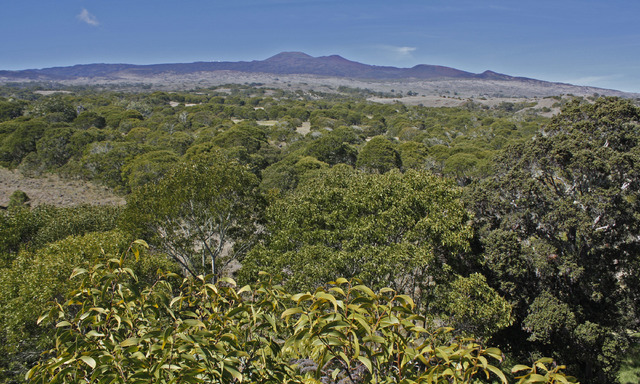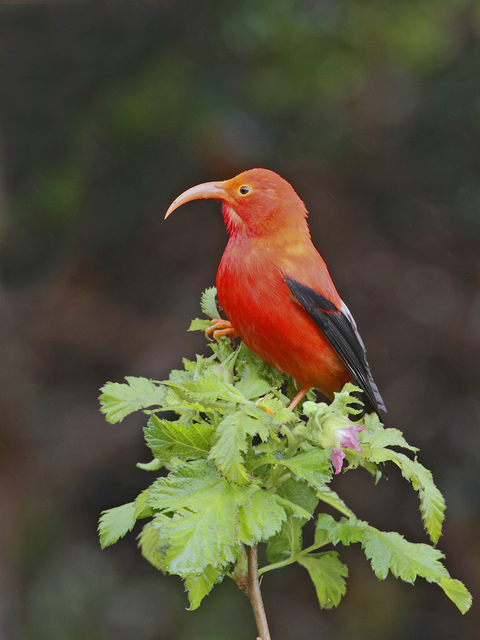When a tree falls in Hakalau Forest National Wildlife Refuge, volunteers and staff can only hope it didn’t land on a fence. ADVERTISING When a tree falls in Hakalau Forest National Wildlife Refuge, volunteers and staff can only hope it
When a tree falls in Hakalau Forest National Wildlife Refuge, volunteers and staff can only hope it didn’t land on a fence.
Formally established in 1985, 10 years after The Nature Conservancy first purchased a parcel of land on the slopes of Mauna Kea, the refuge has since become a critical sanctuary for endangered native forest birds and a successful koa reforestation site.
A primary reason for the refuge’s success over the past 30 years is the miles of fencing that keep alien species away from the native ecosystems. And a new endowment effort launched by the nonprofit Friends of Hakalau Forest organization, in partnership with the Hawaii Community Foundation, hopes to ensure that the refuge can keep up its day-to-day operations even in the face of unstable federal funding.
“With any forest in Hawaii, you’ve got to keep maintaining or it goes downhill,” said J.B. Friday, a University of Hawaii at Hilo extension forester and board member of the Friends of Hakalau Forest. “The weeds come in, the pigs come in, the cattle come in. It takes a long, long time and a lot of effort to bring it back.”
Hakalau is “the only substantial forest on the Big Island in which the native bird populations are stable or increasing,” said Rob Shallenberger, Friends of Hakalau Forest vice-president. Shallenberger was a private consultant when the initial forest bird survey took place in the 1970s to determine which species lived in the area. He also managed Pacific refuges for the U.S. Fish and Wildlife Service for more than 20 years.
The endowment “really all ties to the face that there’s been fluctuation in (federal) funding over the years — for legitimate reasons, but it happens,” Shallenberger said. “In most places, they’re able to adapt.”
But at the Hakalau refuge, something as basic as a damaged fence can be devastating if not addressed immediately. The refuge is adjacent to the state-managed Piha game reserve, which is full of feral pigs on the move.
“Those pigs look up and down the fence line looking for a break,” Friday said.
Shallenberger said the refuge can’t be dependent on securing private funds to help out when federal funding comes up short. The endowment is a way to provide stability.
“It’s a useful tool in situations where you would lose ground, and all the time you’ve invested in securing an area is lost,” Shallenberger said.
The fund is administered by the Hawaii Community Foundation, which will make investment decisions for the endowment and provide annual grants to support the refuge’s projects.
Friday has mainly been involved with the koa reforestation efforts, working to bring trees back to land once cleared as pasture.
“It’s the biggest koa reforestation anywhere in the state,” he said. “Almost all of the work was done by volunteers. It’s just been barren.”
Groups of volunteers plant koa nearly every weekend. Friday said that since the effort began, more than half a million trees have been planted.
Volunteer trips are the main way people to visit the Hakalau Forest. The refuge also hosts two open houses a year for the public, one in October and one in April. These events can draw several hundred visitors, Friday said.
Twice in the past, the open houses had to be canceled because of the threat of government shutdown.
“If you’re planning an event early in October, and they’re discussing a Sept. 30 shutdown, you can’t go with the uncertainty,” Friday said.
To learn more about the Hakalau Forest Refuge Management Endowment, or to donate to the effort, visit https://friendsofhakalauforest.org.




